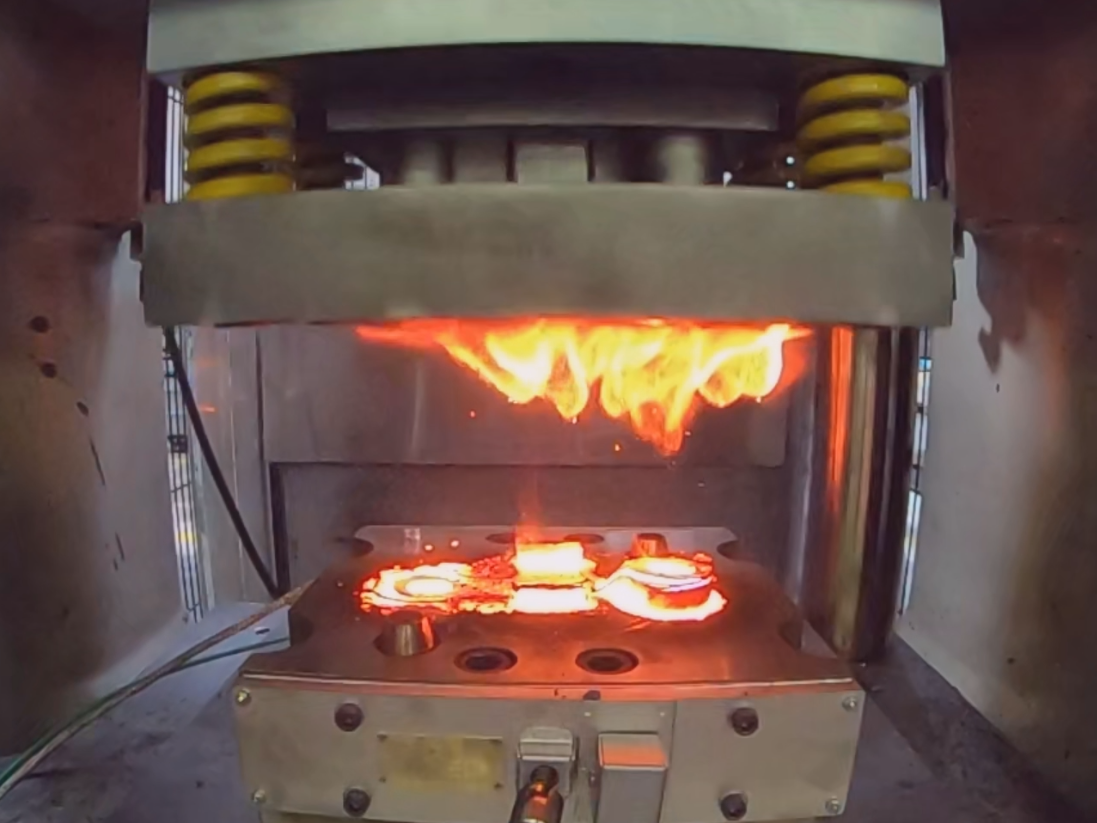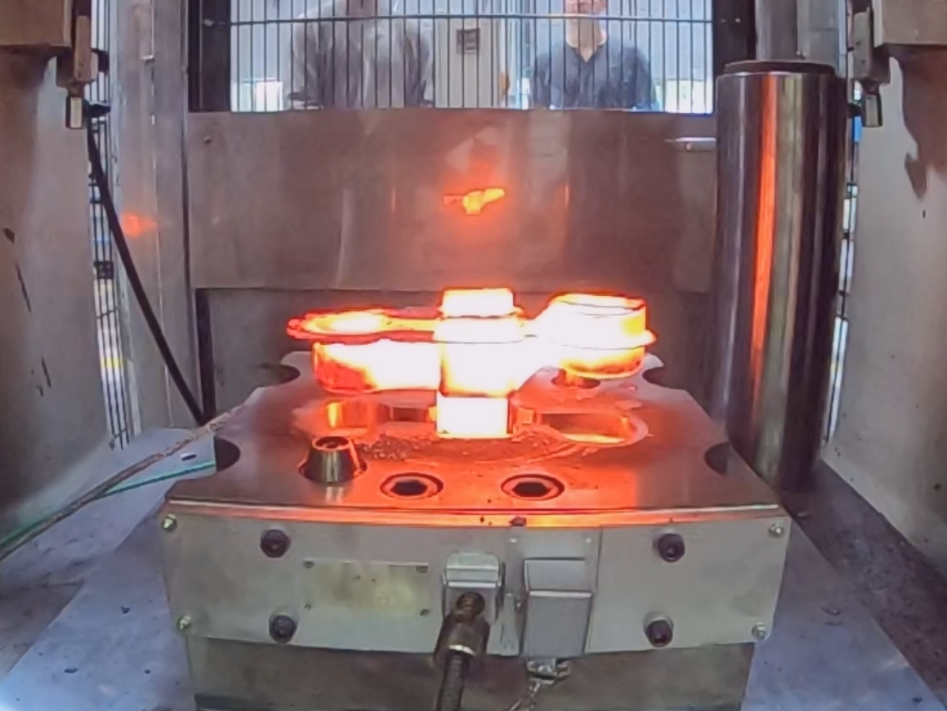[Translate to English:] Bernd-Arno Behrens, Anna Chugreev and Alexander Chugreev (2018) 21st International ESAFORM Conference on Material Forming – ESAFORM 2018, Palermo, Italy, AIP Conference Proceedings, Vol. 1960-1, 040003.



The forging with integrated heat treatment enables the use of forging heat and thus shortens process chains and saves energy. At the same time, locally adapted properties can be set by controlling the phase transformation behaviour through targeted cooling in the spray field. However, the process design is challenging because thermal, mechanical and metallurgical effects interact with each other and significantly influence the final component properties.
The process design is therefore supported numerically. In doing so, the occurring interactions are to be taken into account by means of appropriate models and experimental characterisation procedures. In addition to the thermomechanical behaviour, the focus is therefore on the characterisation and the numerical description of the phase transformation behaviour and its interaction with thermal and mechanical effects. This holistic approach enables not only the prediction of the final component properties but also the calculation of the occurring residual stresses and possible distortions.
Prozessvideo
Publication
Hot forming as a coupled thermo-mechanical process comprises numerous material phenomena with a corresponding impact on the material behaviour during and after the forming process as well as on the final component performance. In this context, a realistic FE-simulation requires reliable mathematical models as well as detailed thermo-mechanical material data. This paper presents experimental and numerical results focused on the FE-based simulation of a hot forging process with a subsequent heat treatment step aiming at the prediction of the final mechanical properties and residual stress state in the forged component made of low alloy CrMo-steel DIN 42CrMo4. For this purpose, hot forging experiments of connecting rod geometry with a corresponding metallographic analysis and x-ray residual stress measurements have been carried out. For the coupled thermo-mechanical-metallurgical FE-simulations, a special user-defined material model based on the additive strain decomposition method and implemented in Simufact Forming via MSC.Marc solver features has been used.


























